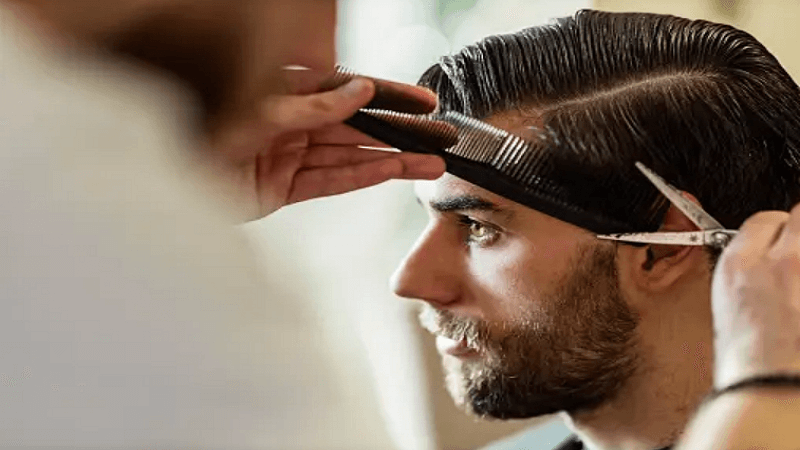Scissors are the most crucial tool that a salon has. The art of hairdressing is complete with a pair of professional barber scissors. A barber can showcase the highest expression of his cutting skills when equipped with the appropriate kind of barber scissors. Scissors are often named haircutting scissors, barber scissors, or hair scissors. Barber scissors have an interesting history that is quite fascinating to reflect on. In ancient times, barber scissors were not like what we see today. Barber scissors evolved in parallel as the barber profession developed. Today these are in the most refined and ergonomic form. Let’s dig in to unveil the evolutionary history of this amazing tool.
Below is the evolution of barber scissors over many years:
History
Ancient Origins
It is somewhat difficult to pinpoint the exact origin time of scissors. The first authentic pair of haircutting scissors dates back to around 1000 BC in Egypt. These were not used as scissors but as iron knives that did the haircutting job well. For the first time, this tool was also used to shear sheep to get wool.
Roman Era
Later in the era of Roman splendor around 1500 BC, it conceived the shorter cross-blade shape. The blade was usually 5 to 7 inches long with a central pivot point. These scissors have either iron or bronze. This form of scissors was sturdier and easier to grip. These scissors were used for not only hair but also fabric and paper.
Medieval Period
The profession of barber developed by now. Haircutting has become the sole responsibility of barbers. This period demands efficient and multipurpose scissors. The scissors used during this time were large and heavy to cut hair and beard. These scissors offered more control for precise cuts, fulfilling what the profession requires.
18th and 19th Centuries
Now, the profession of barber was already widespread. Stainless steel took the place of iron and bronze. Stainless steel offers sharpness and precise cutting. The design of scissors also evolved with well-carved eyes pivoted to thin and long blades.
Modern Hairdressing Scissors
what we see today are modern hair-dressing scissors. These scissors are capable of accommodating many needs. These scissors came in different shapes, sizes, and materials to do the job well. We have seen tremendous differences over centuries. These changes contribute to making hair-cutting efficient. It also adds diversity to the hairdressing business.
Until now we have seen the history of barber scissors. Some key elements make the journey of professional barbers scissors an evolutionary one. These key elements include:
Design
Today’s barber scissors come in ergonomic designs. These designs accommodate advanced features, quality, blade shapes, and sizes. The new designs support the comfort of the barbers. These designs make the haircutting experience better. Some barber scissors come with convex stainless-steel blades for a smooth and blended cut. These blades also reduce the strain on hands which adds to the ease of barber. The scissors handle is now made with a silicon finish to provide a solid grip.
Customized Tension
The variation and diversity in the hairstyling business demands more customized settings. Some barber scissors come with customized tension settings. Barbers can adjust these according to their preferences. Barbers can adjust the tension of the handle according to the specific hairstyle. Some scissors also came with a customized blade option. Barbers can change the blades of scissors depending on the haircut of customers. Different types of blades include thinning shears, texturing blades, and blending blades. All these customized options ease the barber’s work.
Material
Traditionally, barber scissors had iron or bronze body. These materials are prone to rust which can damage the color and sharpness. In this present time, barber scissors are manufactured with high-quality stainless steel. The main benefit of this advancement is the durability of the tool. Also, the performance is enhanced with added sharpness and precision with this material.
Coating Material
The outer coating of the scissors is the main element to increase the longevity of the tool. Some scissors in the market now come with titanium or Teflon finish. This outer layer ensures a smooth cutting edge. It reduces friction between hair and blades. This outer coating also increases the durability of these scissors.
Advanced Manufacturing Techniques
Most of the scissors manufacturing companies use CNC (Computer Numerical Control) technology. This is a precision technique to ensure accurate measurements during the manufacturing process. Incorporating computer-based technology increases the quality and consistency of barber scissors. Modern barber scissors are now equipped with Bluetooth settings for device connectivity.
Conclusion
The evolutionary history of barber scissors shows us the commitment of manufacturing companies. They aim to enhance the functionality, performance, comfort, and durability of barber scissors. The hairdressing business is ever-changing and diverse. Demand for new kinds of hairstyles increases with advancements in the fashion industry. Some of the different types of barber scissors are short/long blade scissors, thinning scissors, and trimming scissors. We can expect to see more innovations and refinement in the manufacturing of barber scissors in the future. These changes mean to keep up with new trends and demand.
